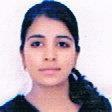International Journal of Wireless and Microwave Technologies (IJWMT)
IJWMT Vol. 8, No. 5, 8 Sep. 2018
Cover page and Table of Contents: PDF (size: 893KB)
Reduction of Inter-Symbol Interference Using Artifical Neural Network System in Multicarrier OFDM System
Full Text (PDF, 893KB), PP.10-18
Views: 0 Downloads: 0
Author(s)
Index Terms
OFDM, Artificial Neural Network (ANN), FFT, QAM, BER, ISI, MMSE
Abstract
The work proposes Inter-Symbol Interference (ISI) reduction scheme, ISI being a major problem in Optical systems, which produces various type of non-linear distortions. So the implementation of OFDM system using Artificial Neural Network (ANN) scheme with M-QAM modulation technique is proposed and compared with the conventional OFDM system without using ANN. This proposed scheme is implementation of Back-propagation (BP) algorithm over AWGN channels to achieve an effective ISI reduction in orthogonal frequency division multiplexing (OFDM) systems. Simulation results prove that ANN equalizer can further reduce ISI effectively and provide acceptable BER and better MSE plot compared to conventional OFDM system.
Cite This Paper
Jyoti Makka, Himanshu Monga, Silki Baghla, " Reduction of Inter-Symbol Interference Using Artifical Neural Network System in Multicarrier OFDM System ", International Journal of Wireless and Microwave Technologies(IJWMT), Vol.8, No.5, pp. 10-18, 2018. DOI: 10.5815/ijwmt.2018.05.02
Reference
[1]R.van Nee, R. Prasad; “OFDM for Wireless Multimedia Communications” Artech House Publishers; Boston, 2000.
[2]Z. Wang and G. B. Giannakis, Wireless multicarrier communications, IEEE Signal Processing Mag., pp. 29–48, May 2000.
[3]D.M. Bappy, Ajoy Kumar Dey, Susmita Saha; “OFDM System Analysis for reduction of Inter symbol Interference Using the AWGN Channel Platform”; IJACS; Vol. 1, No. 5, November 2010.
[4]Yang-Yang Chen, Zi-Wei Zheng; “Research on the Inter Symbol Interference Mitigation for the MIMO-OFDM Systems”; IEEE 2011.
[5]Aida zaier1 and Ridha bouallègue; “a full performance analysis of channel estimation methods for time varying ofdm systems” ijmnct ;Vol. 1, no. 2, December 2011.
[6]Usama S. Mohammed, Ahmed Tohamy; “A Low Complexity OFDM System with Minimum Inter-symbol Interference”; IEEE 2012.
[7]Pragya Sharma;“Performance Analysis of Zero-Forcing Equalizer for ISI Reduction in Wireless Channels”; International Journal of Engineering Research & Technology; Vol. 1 Issue 8, October – 2012.
[8]Amit goyal1, gurleen kaur walia2 and simranjeet kaur; “implementation of back propagation algorithm using MATLAB”; international journal of information technology and knowledge management; July-Dec 2012, volume 5, no. 2, pp. 429-431.
[9]Prafulla. D. Gawande and Sirddharth. A. Ladhake; “BER Performance of OFDM system with cyclic prefix & zero padding”;International Journal of Advances in Engineering & Technology; Mar. 2013.
[10]Nirmalkumar S. Reshamwala1, Pooja S. Suratia, Satish K. Shah; “Artificial Neural Network trained by Genetic Algorithm for Smart MIMO Channel Estimation for Downlink LTE-Advance System”; I.J. Computer Network and Information Security, 2014, 3, 10-19; DOI: 10.5815/ijcnis.
[11]Chi Dinh Nguyen, Jaejin Lee; “Elimination of two-dimensional inter-symbol interference through the use of a 9/12 two-dimensional modulation code”; IET Communication., 2016, Vol. 10, Issue 14, pp. 1730–735.
[12]Amevi Acakpovi, Abdul-Shakud Iddrisu, Nana Yaw Asabere and John Kwofie; “Performance Comparison of Cyclic Prefix OFDM and Unique Word OFDM in the LTE Downlink”; International Journal of Computer Science and Telecommunications; Volume 7, Issue 2, February 2016.
[13]R Srinivasa Aditya Varma, Marthy Siva Sai Krishna; “ Estimation of channel in an OFDM wireless channel using LS and MMSE techniques”; IJECET; Volume 7, Issue 3, May–June 2016, pp. 68–74.
[14]Arne Bråten;“Data editing with Artificial Neural Networks”; December 1997.
